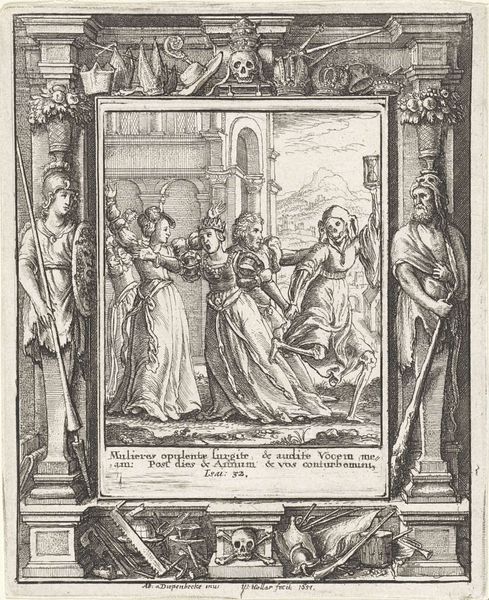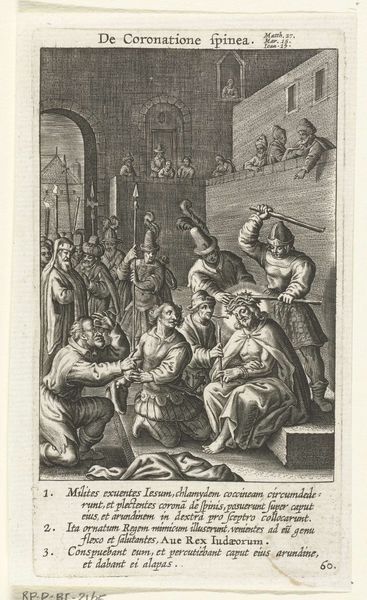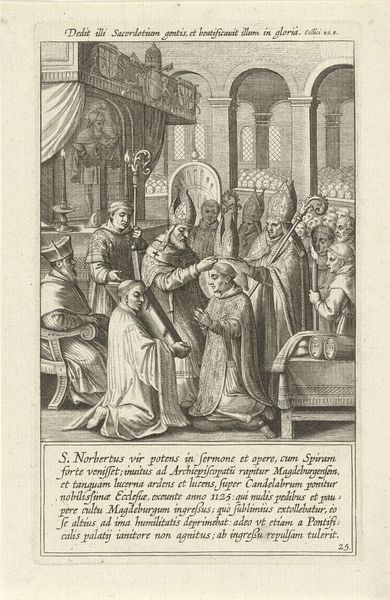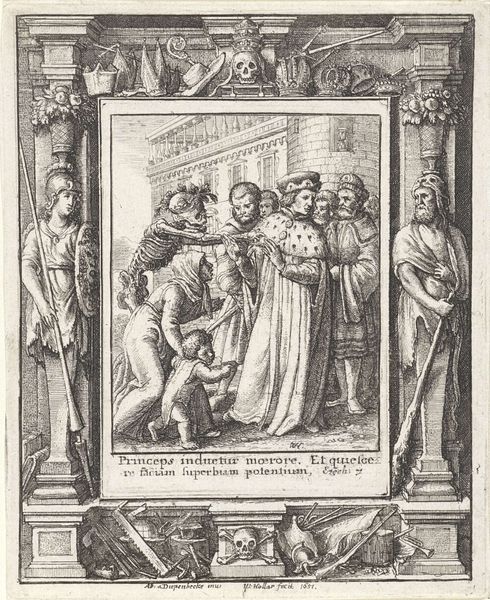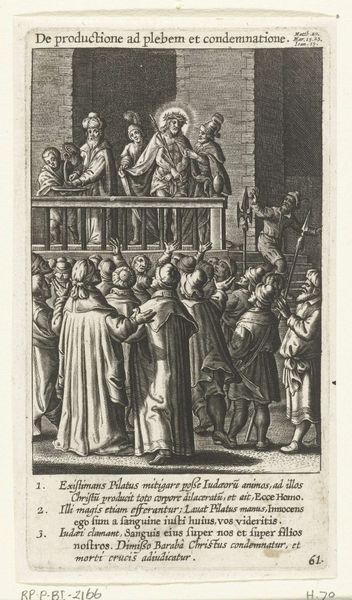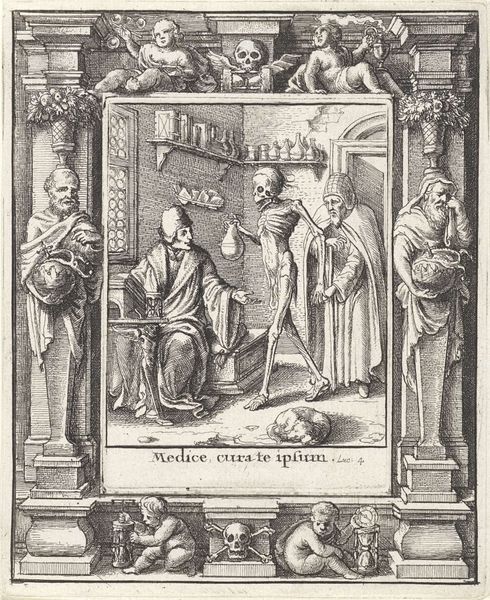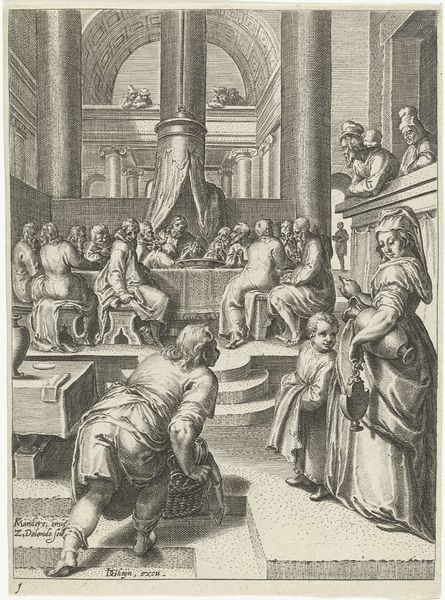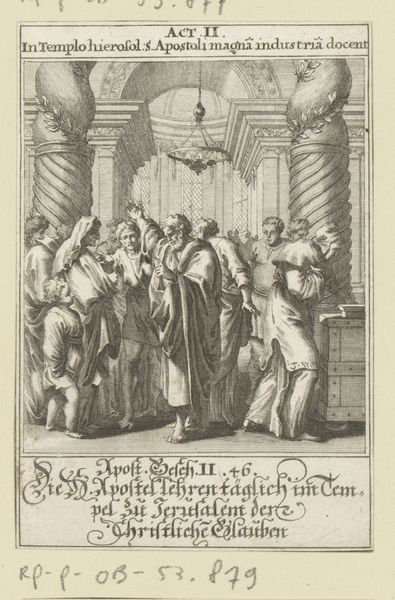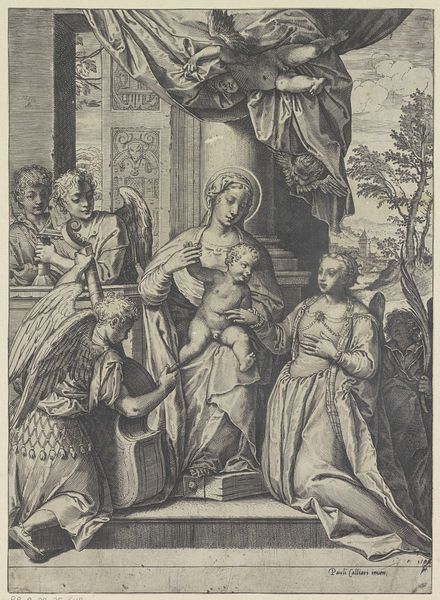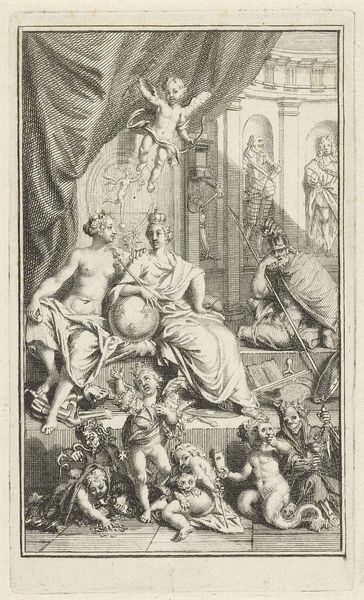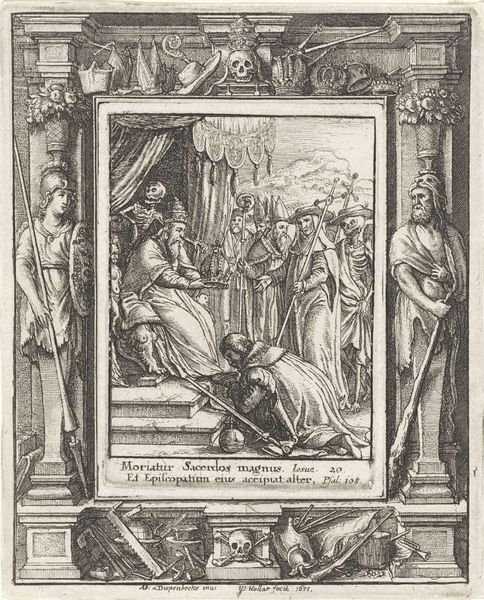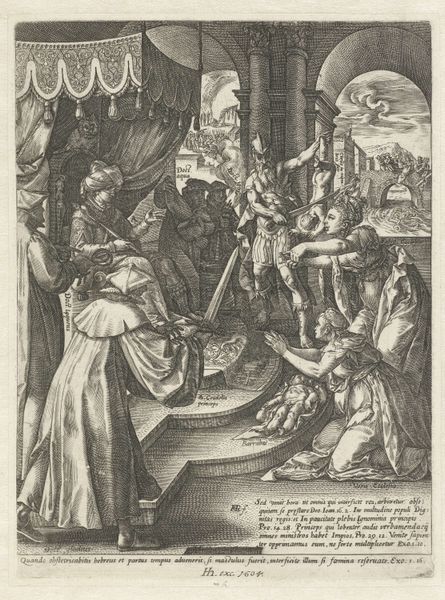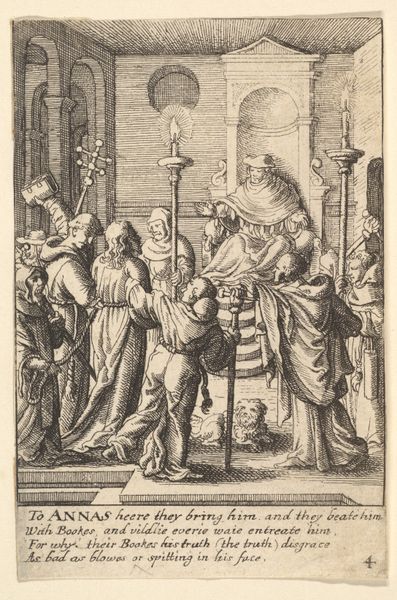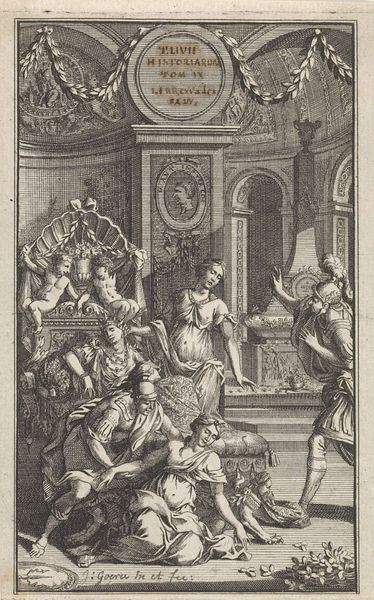
print, engraving
#
allegory
#
baroque
#
pen drawing
# print
#
old engraving style
#
pen work
#
history-painting
#
engraving
Dimensions: height 154 mm, width 97 mm
Copyright: Rijks Museum: Open Domain
This allegory was etched by Reinier van Persijn in the Netherlands in the mid-17th century. It presents us with a theatrical stage occupied by figures that embody moral choices. This engraving, made for a published edition of the Roman satirists Juvenal and Persius, engages with the enduring tension between virtue and vice, a familiar theme in Dutch Golden Age art. Note how the figures are arranged on a classical stage, with devils looming above and a heavenly scene revealed behind a curtain. This reflects the period's fascination with theater as a metaphor for human life and moral choices. The Dutch Republic, a rising power at the time, saw a flourishing of artistic and intellectual life, but also faced challenges related to wealth, trade, and social values. Looking at this, we can ask: how did the institutions of publishing and classical education shape the image? And what resources can we draw on to better understand the artist's intention and the work's reception in its own time? The meaning of this art, as with all art, is contingent on its social and institutional context.
Comments
No comments
Be the first to comment and join the conversation on the ultimate creative platform.
